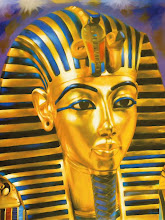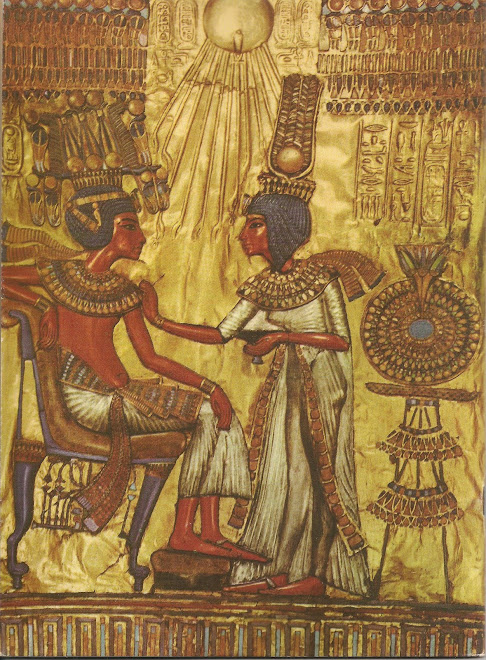Info On This Great black & white Occult-Satanic-Horror Movie, In Which Dr. Julian Karswell Is Loosely Based On Aleister Crowley Persona:
The film's production was turbulent due to clashing ideas between producer Hal E. Chester on one side and Tourneur and writer Charles Bennett on the other. Although the original plan was not to show a literal demon, producer Chester inserted a monster over the objections of the writer, director and star Dana Andrews. To accelerate the pace, the film was trimmed down to 83 minutes (and retitled Curse of the Demon) in the US where it played the second half of a double feature bill with both The True Story of Lynn Stuart and The Revenge of Frankenstein (1958).
Cast
- Dana Andrews as John Holden
- Peggy Cummins as Joanna Harrington
- Niall MacGinnis as Doctor Karswell
- Maurice Denham as Professor Harrington
- Athene Seyler as Mrs. Karswell
- Liam Redmond as Mark O'Brien
- Reginald Beckwith as Mr. Meek
- Ewan Roberts as Lloyd Williamson
- Peter Elliott as Kumar
- Rosamund Greenwood as Mrs. Meek
- Brian Wilde as Rand Hobart
- Richard Leech as Inspector Mottram
- Lloyd Lamble as Detective Simmons
- Peter Hobbes as Superintendent
- Charles Lloyd Pack as Chemist
- John Salew as Librarian
- Janet Barrow as Mrs. Hobart
- Percy Herbert as Farmer
- Lynn Tracy as Air Hostess
Production
Screenwriter Charles Bennett owned the rights
to the original story "Casting the Runes" and wrote a script loosely based on
it, using the title The Haunted. He sold the script to independent
producer and former child actor Hal E. Chester shortly before going to America.
Bennett regretted selling the script because on arrival in America, he was
approached by RKO who wanted
to purchase his script and allow him to direct the film. Actors Robert
Taylor and Dick Powell
had been in line for the leading roles if this production had taken place.[1][2][3]
Jacques Tourneur was brought in by Chester on the recommendation of Ted Richmond, the producer of Tourneur's previous film, Nightfall (1957).[2] However, Tourneur and Chester had serious disagreements during filming. One argument was about the wind scene; Tourneur tried to convince Chester to replace two electric fans with two aeroplane engines. When Chester hesitated, star Dana Andrews threatened to leave the picture if Chester didn't let "the director direct the picture."[2] Locations for the film include Brocket Hall, Hertfordshire (as Lufford Hall), Stonehenge, Bricket Wood railway station, and the British Museum Reading Room.[4]
After completion of the principal shooting, producer Chester decided to show the demon at the beginning and end of the film. Tourneur later said that he was against the addition, stating "The scenes where you see the demon were shot without me...the audience should never have been completely certain of having seen the demon." Stop-motion master Ray Harryhausen was requested by Columbia Pictures to create the demon for the production, but was already committed to The 7th Voyage of Sinbad, with producer Charles H. Schneer. Author Tony Earnshaw's book Beating the Devil-the Making of Night of the Demon argues that showing the demon was planned early on in the production (despite Tourneur's protests to the contrary), in order to heighten the tension in the film by letting the audience know the demonic powers were real. Bennett, also angry at the script changes said, "If [Chester] walked up my driveway right now, I'd shoot him dead."[3]
Release
Theatrical release
The film was released in the United Kingdom for a theatrical run in December 1957.[5] In Britain, it was released as a double bill with the American film 20 Million Miles to Earth as a double feature.[5] In the United States, the film was released as Curse of the Demon. According to Charles Bennett, the title was changed as the studio didn't want it confused with the similarly titled story of The Night of the Iguana.[5] Curse of the Demon toured drive-ins and theatres variously with The True Story of Lynn Stuart and The Revenge of Frankenstein. Columbia cut several minutes of the film for the US release. Cut scenes included a visit to the Hobart family farm, a trip to Stonehenge, and snippets of the seance scenes and conversations between Karswell and his mother.[6]
Home video
In the United States, the film was released on VHS in 1986 by Columbia TriStar Home Video with a run time of 81 minutes.[7] A second VHS with a 96-minute running time was released by Goodtimes Home Video Corp in 1988.[7] In 1988, a Laserdisc of the film was released by Image Entertainment/Columbia Pictures with an 81 minute running time.[8] A double-bill version with both the UK version of Night of the Demon and the edited US version as Curse of the Demon was released on DVD in August 2002.[7] In the United Kingdom, Night of the Demon was released on VHS in 1995 by Encore Entertainment/Columbia TriStar Home Video.[7] The film was released on DVD in the United Kingdom for the first time on 18 October 2010.
( http://en.wikipedia.org/wiki/Night_of_the_Demon )
( http://www.imdb.com/title/tt0050766/ )
Jacques Tourneur was brought in by Chester on the recommendation of Ted Richmond, the producer of Tourneur's previous film, Nightfall (1957).[2] However, Tourneur and Chester had serious disagreements during filming. One argument was about the wind scene; Tourneur tried to convince Chester to replace two electric fans with two aeroplane engines. When Chester hesitated, star Dana Andrews threatened to leave the picture if Chester didn't let "the director direct the picture."[2] Locations for the film include Brocket Hall, Hertfordshire (as Lufford Hall), Stonehenge, Bricket Wood railway station, and the British Museum Reading Room.[4]
After completion of the principal shooting, producer Chester decided to show the demon at the beginning and end of the film. Tourneur later said that he was against the addition, stating "The scenes where you see the demon were shot without me...the audience should never have been completely certain of having seen the demon." Stop-motion master Ray Harryhausen was requested by Columbia Pictures to create the demon for the production, but was already committed to The 7th Voyage of Sinbad, with producer Charles H. Schneer. Author Tony Earnshaw's book Beating the Devil-the Making of Night of the Demon argues that showing the demon was planned early on in the production (despite Tourneur's protests to the contrary), in order to heighten the tension in the film by letting the audience know the demonic powers were real. Bennett, also angry at the script changes said, "If [Chester] walked up my driveway right now, I'd shoot him dead."[3]
Release
Theatrical release
The film was released in the United Kingdom for a theatrical run in December 1957.[5] In Britain, it was released as a double bill with the American film 20 Million Miles to Earth as a double feature.[5] In the United States, the film was released as Curse of the Demon. According to Charles Bennett, the title was changed as the studio didn't want it confused with the similarly titled story of The Night of the Iguana.[5] Curse of the Demon toured drive-ins and theatres variously with The True Story of Lynn Stuart and The Revenge of Frankenstein. Columbia cut several minutes of the film for the US release. Cut scenes included a visit to the Hobart family farm, a trip to Stonehenge, and snippets of the seance scenes and conversations between Karswell and his mother.[6]
Home video
In the United States, the film was released on VHS in 1986 by Columbia TriStar Home Video with a run time of 81 minutes.[7] A second VHS with a 96-minute running time was released by Goodtimes Home Video Corp in 1988.[7] In 1988, a Laserdisc of the film was released by Image Entertainment/Columbia Pictures with an 81 minute running time.[8] A double-bill version with both the UK version of Night of the Demon and the edited US version as Curse of the Demon was released on DVD in August 2002.[7] In the United Kingdom, Night of the Demon was released on VHS in 1995 by Encore Entertainment/Columbia TriStar Home Video.[7] The film was released on DVD in the United Kingdom for the first time on 18 October 2010.
( http://en.wikipedia.org/wiki/Night_of_the_Demon )
( http://www.imdb.com/title/tt0050766/ )
.bmp) |
| Original UK quad poster |

+001.jpg)
+001.jpg)
+001.jpg)
+001.jpg)

.jpg)
.jpg)








+001.jpg)

+001.jpg)




+001.jpg)

+001.jpg)






+001.jpg)




+001.jpg)
+001.jpg)
+001.jpg)

.jpg)


